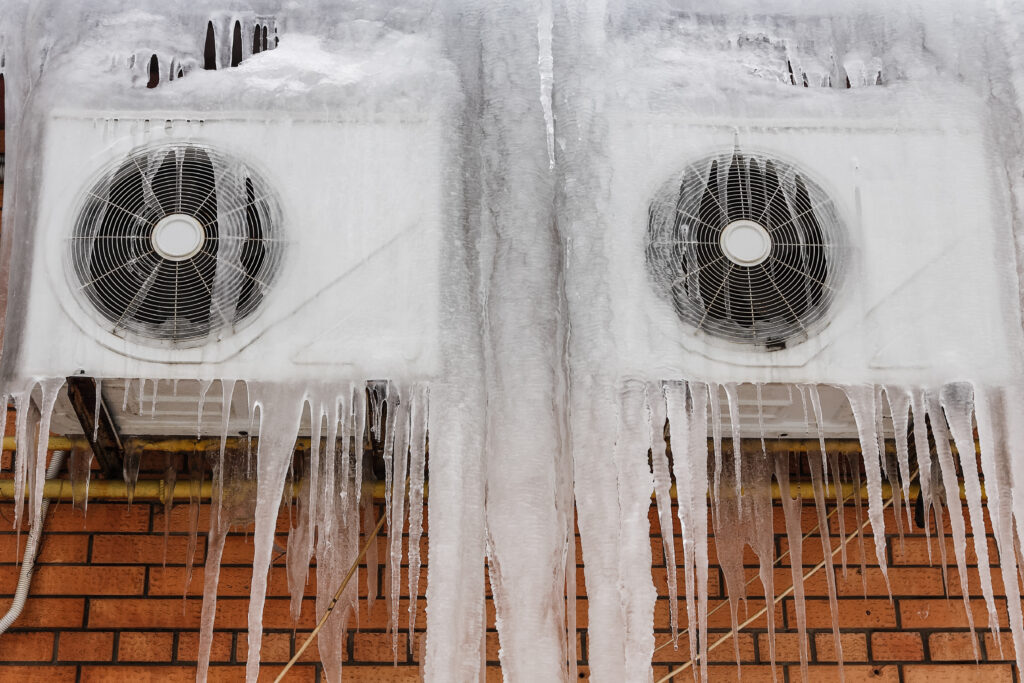Managing a Frozen AC Pipe: Professional Tips
Managing a Frozen AC Pipe: Professional Tips
Blog Article
This article following next about Have a Frozen AC Line? Here’s How to Fix It is incredibly enjoyable. Don't miss it.

Intro
Uncovering that your air conditioner pipeline is iced up can be concerning, especially during hot summer months when you rely upon your a/c the most. Comprehending what to do in such a situation is essential to prevent more damages to your cooling system and ensure your comfort indoors.
Comprehending the Causes
A number of aspects can contribute to the freezing of an AC pipe. Recognizing these causes can aid you attend to the issue properly.
Lack of Airflow
One usual source of an icy AC pipe is inadequate air movement. When the air flow over the evaporator coil is restricted, it can cause the coil to drop below freezing temperature level, causing ice development on the pipe.
Reduced Refrigerant Levels
Insufficient cooling agent degrees in your a/c system can also cause a frozen pipeline. Reduced refrigerant degrees can cause the pressure in the system to go down, resulting in the freezing of dampness on the evaporator coil.
Winter Conditions
In colder environments, freezing temperatures outside can contribute to the cold of AC pipelines. If your a/c system is not correctly shielded or if there are leaks in the ductwork, chilly air can infiltrate the system, creating the pipe to ice up.
Dirty Air Filters
Filthy or clogged up air filters can limit airflow in your a/c system, leading to various problems, including a frozen pipe. It's necessary to replace or clean your air filterings system routinely to make sure appropriate air flow and stop ice accumulation.
Indicators of a Frozen A/c Pipe
Recognizing the signs of an icy a/c pipe is important for timely activity.
Decreased Airflow
If you discover a considerable decrease in air flow from your vents, it could suggest a frozen pipeline.
Ice Buildup on the Pipe
Noticeable ice accumulation on the refrigerant line or the evaporator coil is a clear indicator of a frozen air conditioner pipe.
Odd Sounds from the Unit
Unusual noises, such as hissing or bubbling, coming from your air conditioner system can indicate that there's ice existing on the pipeline.
Immediate Actions to Take
When faced with a frozen AC pipeline, it's necessary to act quickly to prevent additional damage to your cooling system.
Shutting off the AC
The very first step is to turn off your a/c unit to stop the system from running and exacerbating the issue.
Looking for Blockages
Inspect the area around the indoor unit for any blockages that may be obstructing airflow, such as furniture or curtains.
Defrosting the Pipe
You can use gentle techniques like positioning towels taken in warm water around the icy pipeline to aid thaw it slowly.
Safety nets
Taking preventive measures can assist prevent future occurrences of an icy a/c pipeline.
Regular Maintenance Checks
Set up routine maintenance checks with an expert HVAC service technician to make certain that your air conditioner system is running efficiently.
Changing Air Filters
Routinely replace or cleanse your air filters to prevent airflow limitations and maintain ideal performance.
Protecting Exposed Pipes
If your a/c pipelines are exposed to cold temperatures, think about protecting them to prevent cold throughout cold weather.
Looking For Professional Help
If DIY approaches stop working to settle the concern or if you're not sure about just how to continue, it's finest to seek help from a qualified HVAC technician.
When DIY Methods Fail
If your attempts to thaw the pipeline or address other problems are not successful, it's time to employ a professional.
Value of Hiring a Professional HVAC Technician
A qualified HVAC specialist has the proficiency and tools essential to diagnose and repair issues with your a/c system securely and properly.
Verdict
Dealing with a frozen air conditioning pipeline can be a discouraging experience, but knowing just how to react can aid minimize damages and restore convenience to your home. By understanding the reasons, acknowledging the indications, and taking timely activity, you can successfully resolve the issue and stop future occurrences.
What to Do If Your AC Line Is Frozen
Make Sure All Supply and Return Air Vents Are Open
If you notice problems with airflow, the first thing you should do is check your supply and return vents. Supply vents distribute clean, conditioned air throughout your home. As this air becomes stale, it’s pulled into the return vent, where it’s reconditioned before being sent back out through the supply vent.
When these vents are closed, air won’t flow in the home. Before examining your AC, check the vents in every room and ensure they’re all open.
Check for a Dirty Air Filter
Another possible cause of limited airflow is a dirty air filter. Your air conditioner’s filters catch elements you don’t want to breathe in, such as dirt and dust. Over time, filters can become clogged, ultimately blocking air from flowing in and out. The lack of airflow can then cause the entire coil to freeze and will completely restrict any air from moving through it. The AC may need to be powered off for one to two days to allow the coil to thaw after replacing the filter to allow proper functioning of the unit. This debris can also accumulate on your AC’s evaporator coil, requiring a more serious repair. In general, air filters should be cleaned regularly (about every two weeks).
Assess Your Outdoor Unit
In addition to checking your AC, assessing the outdoor unit is a good idea. Also known as the condensing unit, it works with your interior unit to release heat outside. An issue with the outdoor unit can result in rising internal temperatures.
Overgrown Shrubs or Clogged Leaves
From leaves and twigs to shrubs and debris, there’s no shortage of outdoor elements that can accumulate around your condensing unit. When these elements get lodged inside the unit, they can block airflow. Fortunately, removing the blockage can solve the problem.
Sounds of a Broken Fan
Shrubs and leaves aren’t the only things that can impede your outdoor unit’s airflow. If the fan is broken, the unit won’t be able to properly get rid of heat — which means the internal temperature won’t go down. First, make sure the fan is spinning. If it is, check for the following sounds of a broken fan:
Buzzing Rattling Screeching Hissing Clicking Preventative Measures
Nobody wants to deal with a frozen AC line. In addition to causing problems with your air conditioner, they require professional repairs. On the bright side, there are preventative measures you can take to help ensure this issue doesn’t arise in the first place.
https://www.coopergreenteam.com/blog/what-to-do-if-ac-line-frozen

I recently found that write up on Have a Frozen AC Line? Here’s How to Fix It when surfing around the web. Be sure to take the opportunity to share this blog post if you enjoyed it. I appreciate reading our article about Why Is Ice On My Outside Air Conditione.
Request Your Service Report this page